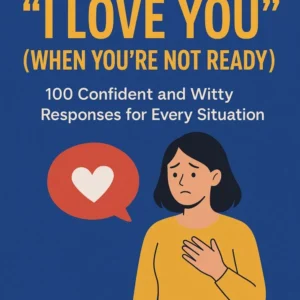Have you ever been caught off guard by a child’s wide-eyed question: “Is Santa real?” If you’re anything like me, you might have paused for a moment—not because you didn’t know the answer, but because you understood that your response carried more weight than a simple yes or no. This question is not just about a bearded man in red; it’s about trust, imagination, and the gentle dance between reality and wonder.
As someone who has worked with children and studied the psychology behind belief, I’ve had my fair share of these conversations. And let me tell you—there’s no one-size-fits-all reply. But there is a thoughtful, respectful, and heartwarming way to approach it.
Why This Question Deserves a Thoughtful Answer
Before diving into the best responses, it helps to understand why children ask this question. It’s not always about disproving a myth. Often, it’s their way of navigating the boundary between fantasy and reality—a developmental milestone backed by child psychologists.
Dr. Jacqueline Woolley, a professor of psychology at the University of Texas, has studied how children distinguish fantasy from reality. Her research reveals that children begin to apply critical thinking to fantastical claims around the ages of 5 to 7, making the Santa question a key part of their cognitive development.
So when a child asks if Santa is real, they’re not testing your honesty—they’re trying to make sense of the world.
How to Respond: Tailoring Your Answer by Age and Personality
Ages 3-5: Nurturing the Magic
At this stage, belief in Santa is often strong. These little ones live in a world where teddy bears talk and clouds are made of candy floss. Here, it’s perfectly fine to say:
“Isn’t Santa wonderful? He brings joy and surprises. What do you think he might bring this year?”
This reply preserves the magic while gently encouraging imagination. There’s no need to break the illusion just yet.
Ages 6-8: Introducing Gentle Skepticism
Children at this age may start picking up inconsistencies. They might ask how Santa gets to every house in one night or why the shopping centre Santa smells like their uncle. A great way to engage them is:
“That’s such a clever question! Some people say Santa is real, others believe he’s a symbol of generosity. What do you think?”
Let them explore both sides while reassuring them that curiosity is welcome.
Ages 9 and Up: Respecting Emotional Intelligence
Older children might already know the answer but seek your validation. This is the time to have an honest, empathetic conversation.
“You’re growing up, and that means you’re ready for some secrets. Santa might not be a real person flying with reindeer, but the spirit of Santa is very real—and it lives in all of us when we give and share joy.”
My Personal Experience: The Letter That Changed My Mind
A few years ago, my nephew asked, “Is Santa real?” I froze. He was six. Torn between honesty and magic, I bought time by saying, “Let me think about how to answer that.”
That night, I came across a letter written by a parent that went viral: “Santa is not a person. Santa is an idea…”
Inspired, I told my nephew: “Santa is real in the way love is real. You can’t see it, but you feel it when someone cares about you.”
His smile told me it was the right answer.
What Experts Say: The Psychology of Belief and Joy
Professor Christopher Boyle of the University of Exeter co-authored a study in the Lancet Psychiatry journal exploring the effects of belief in Santa. One key takeaway? Belief in Santa can enhance a child’s creative thinking, empathy, and sense of wonder—all critical developmental traits.
However, he also warns that how the truth is eventually revealed matters. Children should never feel betrayed or misled, which is why a thoughtful, gradual approach is key.
Cultural Variations: Santa Around the World
Santa isn’t a universal figure. In the Netherlands, children believe in Sinterklaas; in Italy, it’s La Befana; in parts of Austria, it’s the Christkind.
Sharing these stories can help children see Santa not as a lie but as a shared cultural tradition.
“Isn’t it amazing how different countries have their own magical gift-givers? That shows how powerful kindness and generosity are across the world.”
When It’s a Trick Question: Adults Asking for Fun
Sometimes, the question comes from an adult in jest. In such cases, playful responses keep the spirit alive:
“Of course he is—he’s just terrible at replying to emails.”
Or:
“He’s real in the same way that your favourite childhood memories are.”
This keeps the conversation light while affirming the emotional truth behind the character.
FAQs
Is it harmful to let children believe in Santa?
No, experts agree that it can encourage creativity and joy—as long as the eventual truth is delivered with care.
What if my child finds out from someone else?
Use it as a teaching moment. Ask how they feel and reaffirm that you never meant to deceive them.
Should I just tell them the truth from the start?
Only if that fits your family’s values. Many parents see value in keeping the magic alive in early years.
Can I still keep Santa fun for older kids?
Absolutely. Transition from belief in Santa as a person to participation in the “Santa spirit” through gift-giving and volunteering.
Actionable Takeaways for Parents and Caregivers
- Know your child’s stage. Age and emotional development shape how they process information.
- Validate their curiosity. Never shame a child for asking questions.
- Focus on the spirit of Santa. Emphasise generosity, kindness, and joy.
- Keep the magic, lose the lie. Use metaphor and storytelling to keep wonder alive.
- Share cultural insights. Make it an opportunity to learn about global traditions.
Final Thoughts
Whether or not Santa climbs down chimneys is beside the point. What matters is how we use the legend to nurture values like kindness, generosity, and imagination.
So the next time someone asks, “Is Santa real?” remember: You’re not just answering a question—you’re shaping a memory.
Now it’s your turn: How do you answer when someone asks if Santa is real? Share your experience in the comments. Let’s keep the conversation going.
Read Also: How to Respond “What are You Looking At?”
Recommended Products

3,500+ Emoji Meanings Guide (2025 Edition) – Speak Awesomely’s Ultimate Digital Handbook for Every Emoji Explained
Original price was: $ 30.$ 10Current price is: $ 10.Add to Cart
100 Romantic Pick-Up Lines + 20 Bonus 18+ Lines | Modern Dating & Flirting Guide for Confidence, Charm, and Attraction
Original price was: $ 25.$ 10Current price is: $ 10.Add to Cart
100 Witty & Unexpected Responses to Compliments – Speak Awesomely’s Ultimate PDF Guide for Confident, Clever Conversations
Original price was: $ 15.$ 6Current price is: $ 6.Add to Cart
100 Smart & Heart-Savvy Responses to ‘I Love You’ (When You’re Not Ready) – Speak Awesomely’s Essential Communication Guide
Original price was: $ 17.$ 10Current price is: $ 10.Add to Cart








